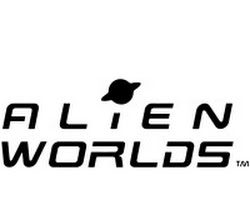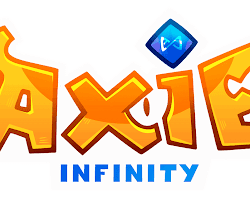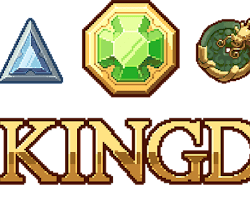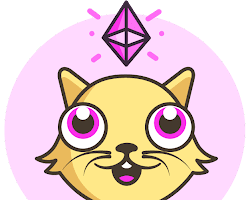Top 10 Web3 Games That Are Popular All Over The World

Web3 games, also known as blockchain games or decentralized games, are a new generation of online games that leverage blockchain technology and decentralized systems to provide unique gaming experiences. These games are built on blockchain platforms like Ethereum, TRON, and EOS, and they incorporate the use of smart contracts and non-fungible tokens (NFTs) to enable ownership, provable scarcity, and interoperability of in-game assets.
Unlike traditional games where players have limited control over their virtual assets and no true ownership, Web3 games empower players with true ownership and control over their in-game items. The use of blockchain technology ensures that these assets are verifiable, unique, and cannot be duplicated or tampered with. This means that players can buy, sell, and trade their in-game items on decentralized marketplaces without the need for intermediaries.
One of the key features of Web3 games is the integration of NFTs. NFTs are cryptographic tokens that represent a unique digital item or asset, such as a character, weapon, or piece of land within a game. These NFTs are stored on the blockchain, and each token has a distinct value and set of attributes that can be verified and transferred securely. The ownership and scarcity of these NFTs are enforced by smart contracts, ensuring transparency and trust between players.
Web3 games also introduce the concept of play-to-earn mechanics. In traditional games, players spend countless hours accumulating in-game resources and leveling up their characters without any real-world value. However, in Web3 games, players can earn cryptocurrencies or other rewards by playing the game and achieving specific objectives. These rewards can be used to purchase additional in-game assets or traded for real-world value.
Another aspect that sets Web3 games apart is their focus on community governance. Decentralized autonomous organizations (DAOs) are often integrated into these games, allowing players to participate in the decision-making process regarding game updates, asset creation, and overall game governance. This creates a more inclusive and democratic environment where players have a say in the evolution and direction of the game.
Furthermore, Web3 games foster a vibrant ecosystem of developers, artists, and content creators. The use of smart contracts allows creators to be rewarded directly for their contributions through revenue sharing models or by receiving a portion of the proceeds from in-game transactions. This incentivizes innovation and creativity, leading to a diverse range of game experiences and unique in-game assets.
In summary, Web3 games revolutionize the gaming industry by leveraging blockchain technology, NFTs, and decentralized systems. These games provide players with true ownership, play-to-earn mechanics, community governance, and a thriving ecosystem for creators. By embracing Web3 games, players can experience a new level of immersion, ownership, and financial opportunities in the gaming world
Also read: Top 5 Questions Answered About Web3 Games
.
Importance of Web3 Games for the Economy
Web3 games have the potential to bring about significant changes to the economy by introducing new models of ownership, economic opportunities, and value creation. Here are some key reasons why Web3 games are important for the economy:
1. True Ownership and Value: Web3 games enable players to have true ownership and control over their in-game assets through the use of blockchain technology and NFTs. This means that players can buy, sell, and trade their virtual items on decentralized marketplaces, creating a real economy around these assets. The ability to prove ownership and scarcity of digital assets opens up opportunities for players to monetize their time and effort spent in the game, as well as for artists and developers to sell their creations directly to players.
2. Play-to-Earn Mechanics: Web3 games introduce play-to-earn mechanics, allowing players to earn cryptocurrencies or other rewards by playing the game and achieving specific objectives. This creates a new avenue for individuals to generate income and participate in the digital economy. Players who may not have traditional job opportunities or access to financial systems can now earn a living or supplement their income by engaging in gameplay activities.
3. Job Creation and Economic Opportunities: The emergence of Web3 games creates a demand for various roles within the ecosystem. Developers, artists, designers, writers, and community managers are just a few examples of the professionals needed to build and maintain these games. As the Web3 gaming industry grows, it generates employment opportunities and stimulates economic growth in related sectors. Additionally, the integration of user-generated content and player-driven economies fosters a dynamic marketplace where creators can monetize their skills and talents.
4. DeFi Integration: Web3 games often incorporate decentralized finance (DeFi) elements, allowing players to leverage financial services directly within the game environment. This integration enables players to earn interest, participate in lending and borrowing, and engage in decentralized trading of their in-game assets. By merging gaming and financial services, Web3 games promote financial inclusion and offer individuals the opportunity to engage with sophisticated financial instruments in a user-friendly and gamified manner.
5. Community Governance and Participation: Web3 games often employ decentralized autonomous organizations (DAOs) to involve players in the decision-making process and governance of the game. This fosters a sense of ownership, transparency, and community participation. Players can influence the game’s direction, vote on proposals, and contribute to the development of new features. This democratic approach to game development and governance empowers players and cultivates a more engaged and loyal community.
6. Cross-Game Interoperability: Web3 games are built on interoperable blockchain platforms, allowing for seamless transfer of assets and data between different games and platforms. This interoperability creates a network effect, where players can use their in-game assets across multiple games, expanding their utility and value. This interconnectedness encourages collaboration between developers and enables the growth of a broader gaming ecosystem.
In conclusion, Web3 games hold great importance for the economy by introducing new models of ownership, enabling play-to-earn mechanics, creating job opportunities, integrating decentralized finance, promoting community governance, and facilitating cross-game interoperability. These games unlock economic potential, empower individuals, and reshape the relationship between players, developers, and the broader gaming industry.
Also read: Top 10 Breakthroughs Of Web3 Gaming In 2023 That Are Loved By Players
Top 10 Web3 Games that are Popular all over the World
Web3 gaming is a new and exciting trend in the gaming industry. These games use blockchain technology to allow players to own their in-game assets, such as characters, items, and land. This creates a more immersive and rewarding gaming experience, as players can truly own and trade their digital assets.
Here are the top 10 Web3 games that are popular all over the world:
- Alien Worlds Alien Worlds is a blockchain-based metaverse game where players can mine Trilium (TLM), the game’s native cryptocurrency. Players can use TLM to purchase land, tools, and other in-game items. Alien Worlds has over 2 million registered players and has generated over $300 million in in-game transactions.

- Splinterlands Splinterlands is a collectible card game (CCG) that uses blockchain technology. Players can collect, trade, and battle with digital cards. Each card is an NFT, which means that it is unique and can be owned by only one person. Splinterlands has over 3 million registered players and has generated over $500 million in in-game transactions.
- Axie Infinity Axie Infinity is a Pokémon-inspired game where players can collect, breed, and battle digital pets called Axies. Axies are NFTs, which means that they can be owned and traded by players. Axie Infinity has over 2 million daily active users and has generated over $2 billion in in-game transactions.

- The Sandbox The Sandbox is a virtual world where players can create, own, and monetize their own experiences. Players can use the game’s VoxEdit tool to create 3D assets, which can then be used to build games, scenes, and other experiences. The Sandbox has over 4 million registered users and has generated over $400 million in in-game transactions.
- DeFi Kingdoms DeFi Kingdoms is a play-to-earn game that combines elements of DeFi, NFTs, and gaming. Players can earn tokens by completing quests, battling monsters, and staking their assets. DeFi Kingdoms has over 1 million registered users and has generated over $200 million in in-game transactions.

- Gods Unchained Gods Unchained is a collectible card game (CCG) that uses blockchain technology. Players can collect, trade, and battle with digital cards. Each card is an NFT, which means that it is unique and can be owned by only one person. Gods Unchained has over 1 million registered players and has generated over $100 million in in-game transactions.
- CryptoKitties CryptoKitties is a digital collectible game where players can collect, breed, and trade virtual cats. Each cat is an NFT, which means that it is unique and can be owned by only one person. CryptoKitties was one of the first blockchain games to gain mainstream popularity.

- Zed Run Zed Run is a blockchain-based horse racing game where players can purchase, breed, and race virtual horses. Each horse is an NFT, which means that it is unique and can be owned by only one person. Zed Run has over 100,000 registered users and has generated over $100 million in in-game transactions.
- REVV Racing REVV Racing is a blockchain-based racing game where players can purchase, upgrade, and race virtual cars. Each car is an NFT, which means that it is unique and can be owned by only one person. REVV Racing has over 50,000 registered users and has generated over $50 million in in-game transactions.

- CyBall CyBall is a blockchain-based soccer game where players can collect, train, and battle with CyBaller NFTs. Each CyBaller is unique and has its own stats and abilities. CyBall has over 10,000 registered users and has generated over $1 million in in-game.
Risks involved with Web3 gaming
While Web3 gaming offers exciting opportunities, it’s important to be aware of the risks associated with this emerging technology. Here are some key risks involved with Web3 gaming:
1. Security Risks: Blockchain technology, while robust, is not immune to security vulnerabilities. Smart contracts, the backbone of many Web3 games, can be prone to coding errors or vulnerabilities that can be exploited by malicious actors. Additionally, the decentralized nature of blockchain systems means that once transactions are recorded on the blockchain, they are immutable, making it challenging to reverse fraudulent or erroneous transactions. This highlights the importance of thorough security audits and smart contract testing to minimize the risk of hacks, scams, and financial losses.
2. Market Volatility: Web3 games often involve the use of cryptocurrencies and other digital assets, which are subject to market volatility. The value of these assets can fluctuate significantly, which may impact the perceived value and profitability of in-game assets. Players and investors must be cautious about the potential risks associated with price volatility and be prepared for potential financial losses.
3. Lack of Regulation: The regulatory landscape surrounding Web3 gaming is still evolving. The decentralized nature of blockchain technology and the global reach of Web3 games make it challenging to enforce traditional regulatory frameworks. This lack of regulation can lead to potential risks, such as scams, fraudulent projects, and inadequate investor protections. Players should exercise caution, conduct thorough research, and be mindful of potential risks when participating in Web3 gaming activities.
4. User Experience and Scalability: Web3 games currently face scalability and user experience challenges. Blockchain networks, such as Ethereum, can experience congestion and high transaction fees during peak periods, leading to slower transaction times and increased costs for players. Moreover, the user experience in Web3 games can be more complex compared to traditional centralized games, which may hinder mass adoption and accessibility for mainstream users.
5. Environmental Impact: Many Web3 games operate on blockchain networks that rely on energy-intensive consensus mechanisms, such as proof-of-work (PoW). The extensive energy consumption associated with these networks has raised concerns about their environmental impact. As the industry progresses, there is a growing push for more sustainable blockchain solutions and the adoption of energy-efficient consensus mechanisms like proof-of-stake (PoS).
6. Interoperability Challenges: While cross-game interoperability is one of the benefits of Web3 gaming, achieving seamless integration and transfer of assets between different games and platforms can present technical and compatibility challenges. These challenges may result in limitations on asset transfers or potential loss of assets during the process.
7. Lack of Quality Control: The open nature of Web3 gaming allows for the creation of a vast number of games and assets. However, this openness also means that not all projects or assets will meet high-quality standards. The lack of quality control and curation can result in a flooded marketplace with low-quality or copycat games, making it harder for players to find reputable and enjoyable experiences.
In summary, while Web3 gaming brings numerous opportunities, it also comes with risks. Security vulnerabilities, market volatility, regulatory uncertainties, scalability issues, environmental impact, interoperability challenges, and lack of quality control are all factors that individuals should consider and manage when participating in Web3 gaming activities. Staying informed, conducting thorough due diligence, and exercising caution can help mitigate these risks and ensure a safer and more enjoyable gaming experience.
Future of Web3 games
The future of Web3 games holds great potential for transformative advancements and widespread adoption. Here are some key aspects that may shape the future of Web3 games:
1. Enhanced User Experience: As the technology behind Web3 games continues to evolve, improvements in scalability, transaction speeds, and user interfaces are expected. User experience will become a key focus, ensuring that Web3 games are accessible, intuitive, and enjoyable for mainstream users. Efforts will be made to streamline the onboarding process, reduce transaction costs, and optimize gameplay mechanics to rival the seamless experiences offered by traditional centralized games.
2. Virtual Reality and Augmented Reality Integration: Web3 games have the potential to leverage virtual reality (VR) and augmented reality (AR) technologies to enhance immersion and create more engaging experiences. By combining Web3 technology with VR and AR, players can enter virtual worlds, interact with NFT-based assets in a more tangible way, and explore game environments in a highly immersive manner. This integration could revolutionize the gaming industry, creating entirely new dimensions of gameplay and social interaction.
3. Cross-Platform and Cross-Game Interoperability: Interoperability will play a vital role in the future of Web3 games. Players will be able to seamlessly transfer their assets and characters across different games and platforms, unlocking new possibilities and enhancing the value of their digital assets. This interoperability will foster collaboration between developers and create a connected gaming ecosystem, allowing for richer gameplay experiences and increased player engagement.
4. Integration of Artificial Intelligence and Machine Learning: The integration of artificial intelligence (AI) and machine learning (ML) technologies in Web3 games holds significant potential. AI can be utilized to create intelligent NPCs (non-player characters), generate dynamic and adaptive game content, enhance player matchmaking systems, and develop more sophisticated gameplay mechanics. ML algorithms can also be employed to improve fraud detection, security, and anti-cheating measures in Web3 games.
5. Increased Adoption of Decentralized Finance (DeFi): Web3 games will likely see increased integration with decentralized finance (DeFi) protocols. Players will have access to a broader range of financial services within the game ecosystem, including lending, borrowing, yield farming, and liquidity provision. This integration can create additional earning opportunities for players and enhance the overall gaming experience by offering more diverse and engaging economic incentives.
6. Enhanced Community Governance: Community governance will continue to evolve in Web3 games, with players having a greater say in the decision-making processes. Decentralized autonomous organizations (DAOs) will enable players to contribute to game development, propose and vote on game updates, and shape the overall direction of the game. This participatory approach will foster stronger community engagement, build trust, and empower players to have a more active role in shaping their gaming experiences.
7. Integration of Real-World Data and Oracles: Web3 games will increasingly incorporate real-world data through the use of oracles, which are bridges connecting blockchain networks with external data sources. This integration will enable game mechanics and outcomes to be influenced by real-world events, enhancing realism and expanding gameplay possibilities. For example, sports games could utilize real-time sports data, and strategy games could consider real-world economic factors when simulating in-game economies.
In summary, the future of Web3 games holds immense promise for enhanced user experiences, VR/AR integration, cross-platform interoperability, AI/ML advancements, DeFi integration, community governance, and the integration of real-world data. These developments will shape a vibrant and immersive gaming ecosystem that leverages decentralized technologies to provide unique, inclusive, and rewarding experiences for players around the world.
Want to prevent getting rugged on web3? Say hello to Fire!
To show web3 users how Fire protects users from frauds by simulating contracts before you sign, we’ve created a Minting Site where you can mint the free Fire NFT! Now on @0xPolygonLabs!
— 6457.eth (@JKrantz) July 8, 2023



























































